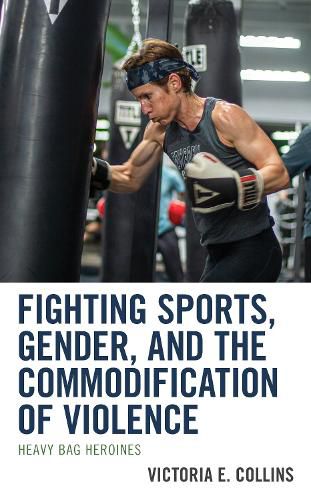Readings Newsletter
Become a Readings Member to make your shopping experience even easier.
Sign in or sign up for free!
You’re not far away from qualifying for FREE standard shipping within Australia
You’ve qualified for FREE standard shipping within Australia
The cart is loading…






Fighting Sports, Gender and the Commodification of Violence: Heavy Bag Heroines offers a glimpse into the cultural terrain of women’s boxing as it manifests in everyday gyms for novice boxers. Taking an ethnographic approach, Victoria Collins examines broad understandings of gender, violence, self-defense, commodification, and health and fitness from the point of view of women who engage in the sport. Collins unpacks dominant assumptions about gender and the sport through the eyes of the women’s understandings of gender norms, social assumptions about physicality, sexuality, as well as challenges to masculine and feminine performativity. Central to this study is the appropriation and marketing of the boxers’ work out in cardio-boxing gym spaces (i.e. fitness boxing), where the sport has increasingly been packaged, commodified, and sold to predominantly middle class, white female consumers as a means to not only improve their health and fitness, but also as a means to defend themselves against a would-be attacker. The body project for women in the sport of boxing, therefore, should not only be framed as a form of resistance, but one of physical feminism.
$9.00 standard shipping within Australia
FREE standard shipping within Australia for orders over $100.00
Express & International shipping calculated at checkout
Fighting Sports, Gender and the Commodification of Violence: Heavy Bag Heroines offers a glimpse into the cultural terrain of women’s boxing as it manifests in everyday gyms for novice boxers. Taking an ethnographic approach, Victoria Collins examines broad understandings of gender, violence, self-defense, commodification, and health and fitness from the point of view of women who engage in the sport. Collins unpacks dominant assumptions about gender and the sport through the eyes of the women’s understandings of gender norms, social assumptions about physicality, sexuality, as well as challenges to masculine and feminine performativity. Central to this study is the appropriation and marketing of the boxers’ work out in cardio-boxing gym spaces (i.e. fitness boxing), where the sport has increasingly been packaged, commodified, and sold to predominantly middle class, white female consumers as a means to not only improve their health and fitness, but also as a means to defend themselves against a would-be attacker. The body project for women in the sport of boxing, therefore, should not only be framed as a form of resistance, but one of physical feminism.